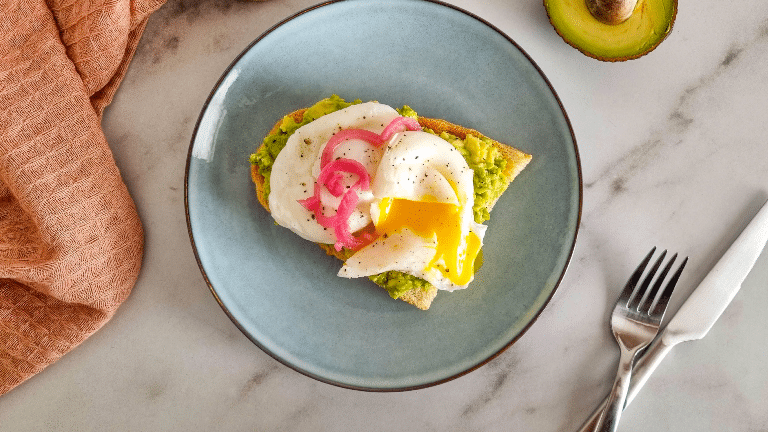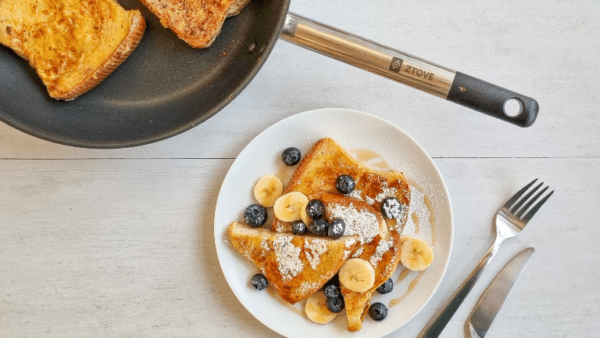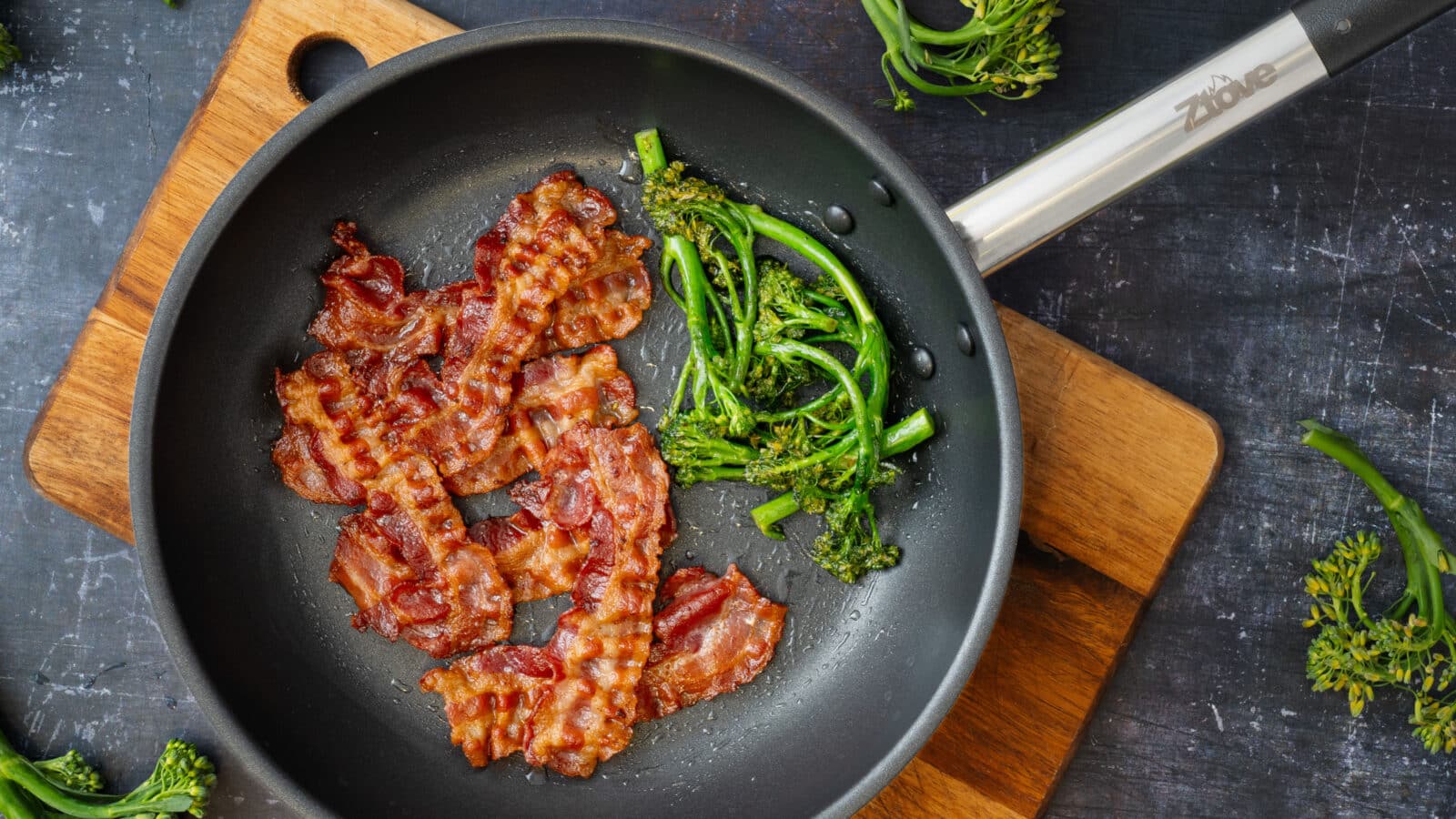
Easy poached eggs


Poached eggs are an essential part of the classic brunch dish Eggs Benedict, but they also taste fantastic in many other dishes. Try them on avocado toast, on a simple piece of toasted bread, with poached asparagus, or as a nice addition to a fresh salad.
Poached eggs have a reputation for being a bit tricky and cumbersome to make since you need to ensure that the egg whites envelop the yolk, and you can only cook one egg at a time. However, we have discovered a method that allows you to prepare multiple eggs at once.
This recipe differs from the traditional method of poaching eggs. In the classic method, you heat water in a saucepan, create a small whirl in the water, and gently add the egg. The whirlpool helps the egg white to wrap around the yolk. The downside of this method is that you can only cook one egg at a time, and it can be challenging to master.
In our recipe, you won’t use a saucepan but instead a frying pan. First, bring the water to a gentle simmer, and then simply crack the eggs into the water in the pan. Depending on the size of the pan, you can poach up to 4 eggs at once. While the eggs may have a slightly flatter shape compared to the traditional method due to taking the form of the pan’s surface, this approach is much easier, allowing you to poach multiple eggs at the same time.
Ingredients
Poached Eggs
Water for cooking
1 tbsp. Vinegar
4 pcs. Eggs
Steps
Tips for great poached eggs
For the best results, use the freshest eggs possible. As eggs age, more of the egg white becomes thin, and we want to avoid that when poaching eggs. The thicker egg white envelops the yolk, providing better shape and presentation, while the thin egg white tends to spread out like a veil and disperses in the water.
To further enhance the poaching process, add a splash of vinegar to the water. The vinegar helps prevent the egg white from dispersing in the water while poaching, resulting in well-formed and neatly poached eggs.
Poach the eggs
Fill a 28 cm pan just over halfway with water, then add the vinegar.
Cover the pan with a lid and heat it to 105 ºC. The water should come to a gentle boil with some bubbles.
Carefully crack the eggs into the water, close to the surface. Make sure to distribute the eggs evenly in the pan.
Using a spoon, slotted spoon, or a similar tool, gently loosen the eggs from the bottom of the pan.
Allow the eggs to cook for 2-3 minutes without a lid (using a lid at 105 ºC may cause the water to boil over). The egg white should be set, while the yolk remains runny. To check, lightly press a finger on the egg – the yolk should feel soft.
Once the eggs are ready, remove them with a slotted spoon and briefly place them in a bowl of cold water to stop the cooking process. Remove them before they become cold. If needed, clean any excess egg white from the eggs before serving.
Notes
If you don’t plan to eat the eggs immediately, you can place them in a bowl of cold water and refrigerate. When you’re ready to eat the eggs, simply bring a pot of water to a boil. Add the eggs briefly to the boiling water, just to warm them up. This way, you can enjoy your poached eggs at the perfect temperature whenever you’re ready to serve them.













